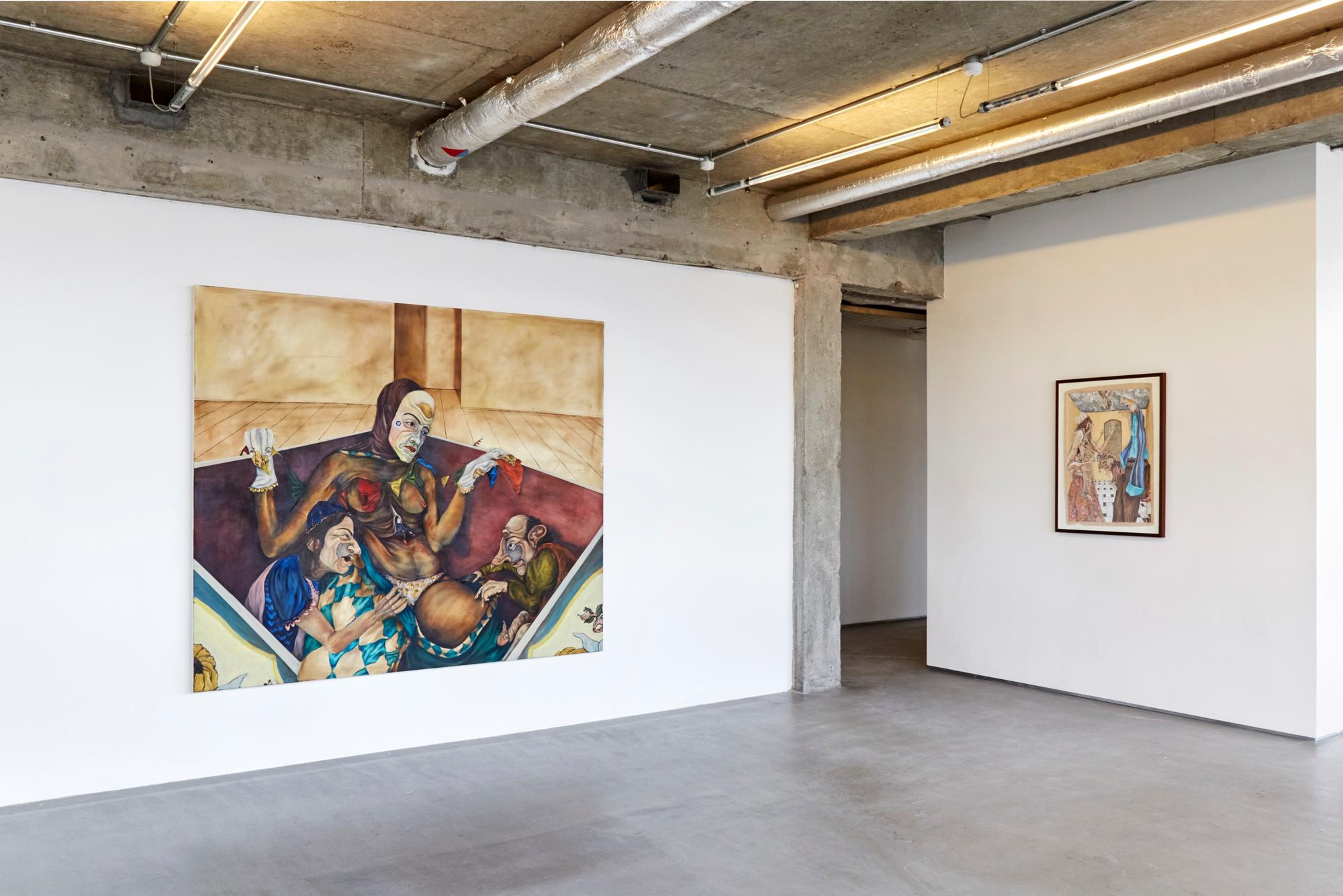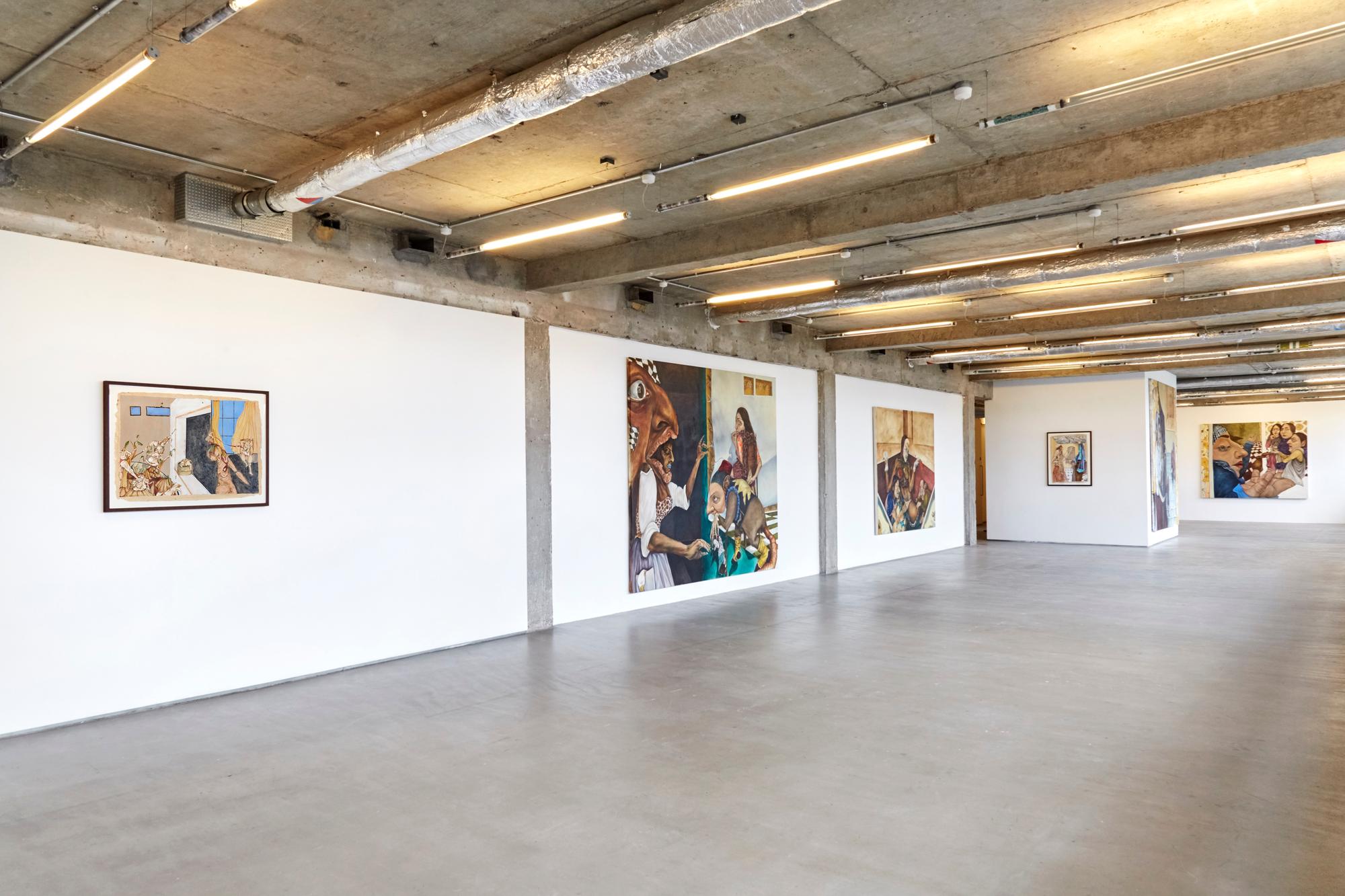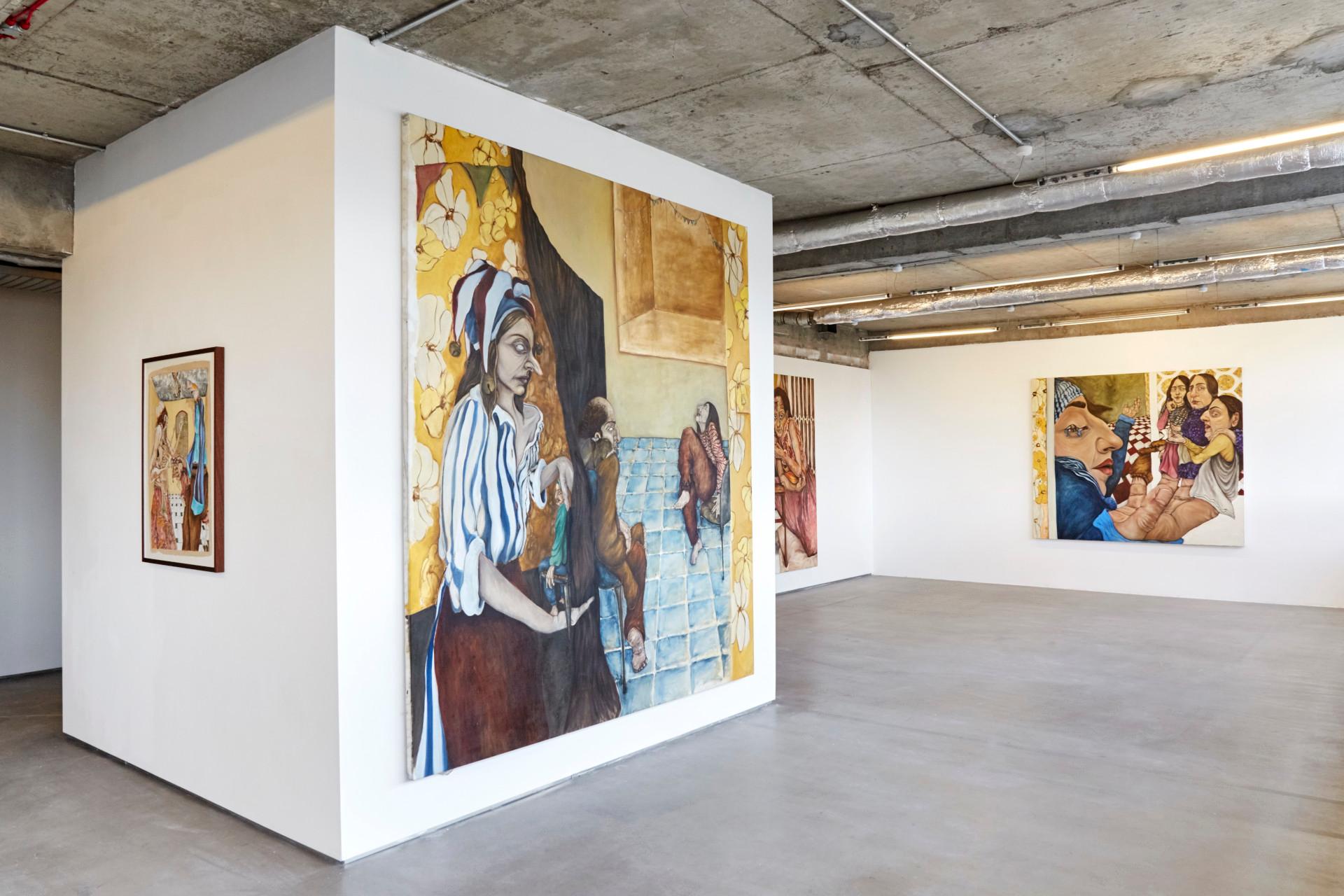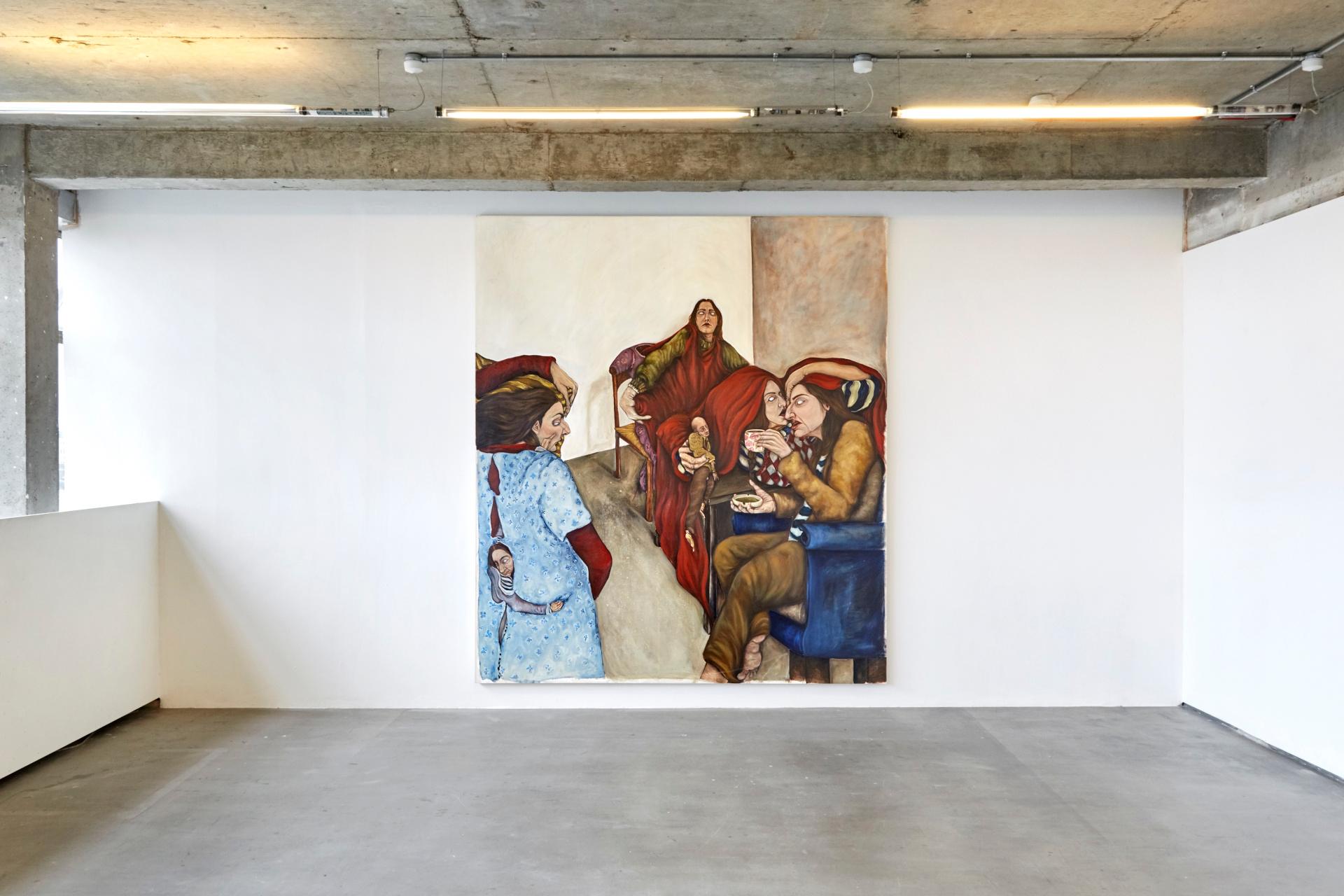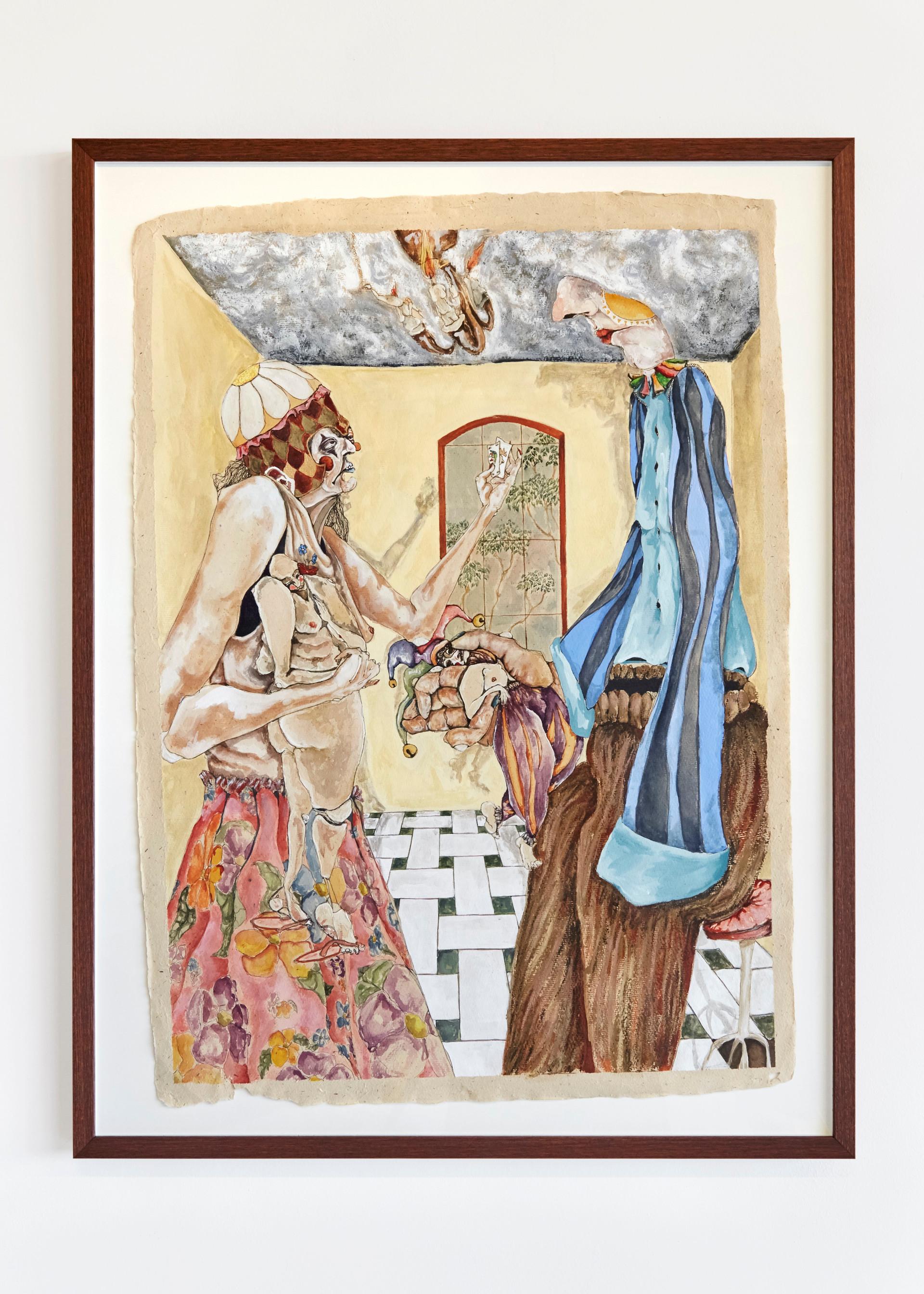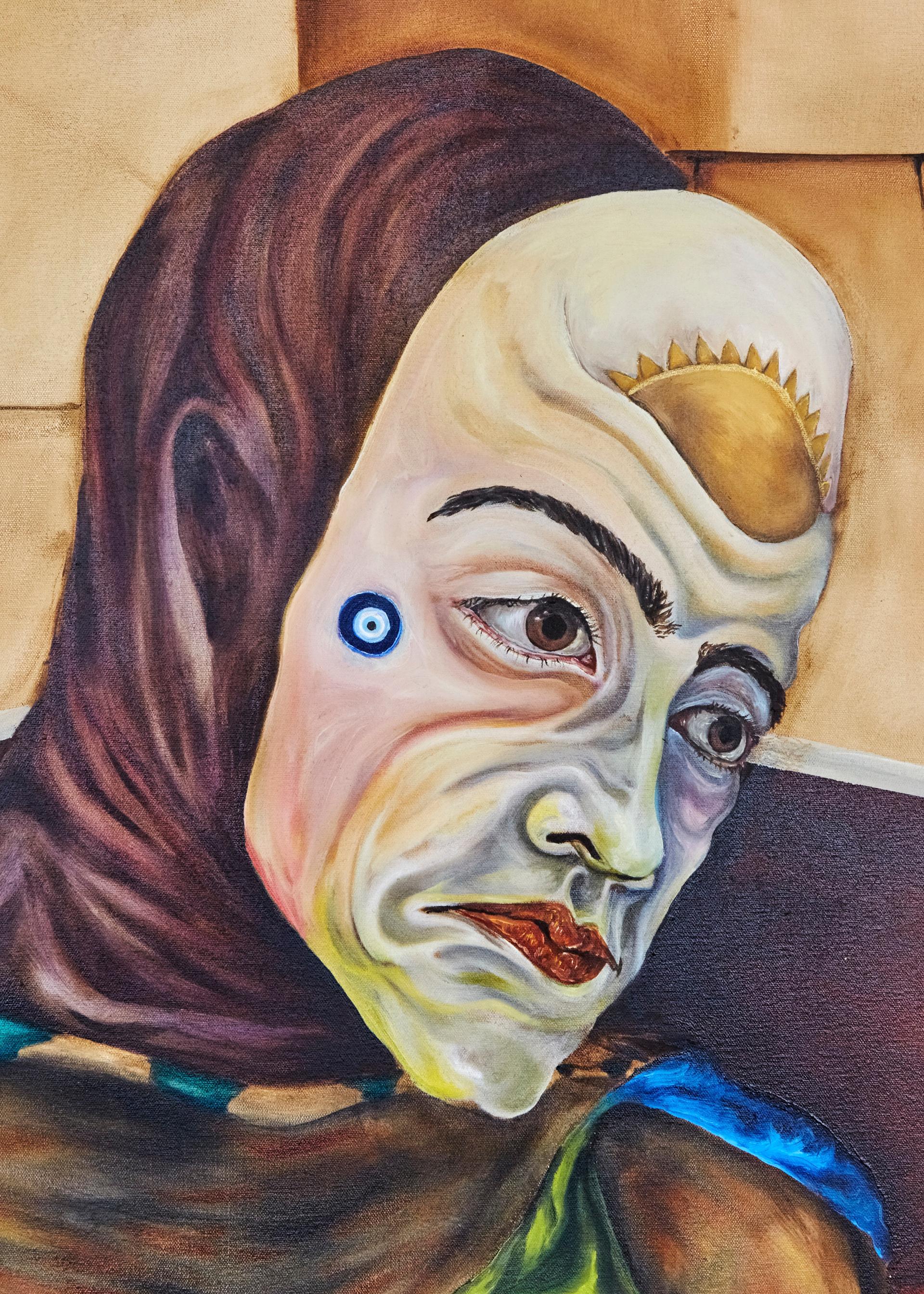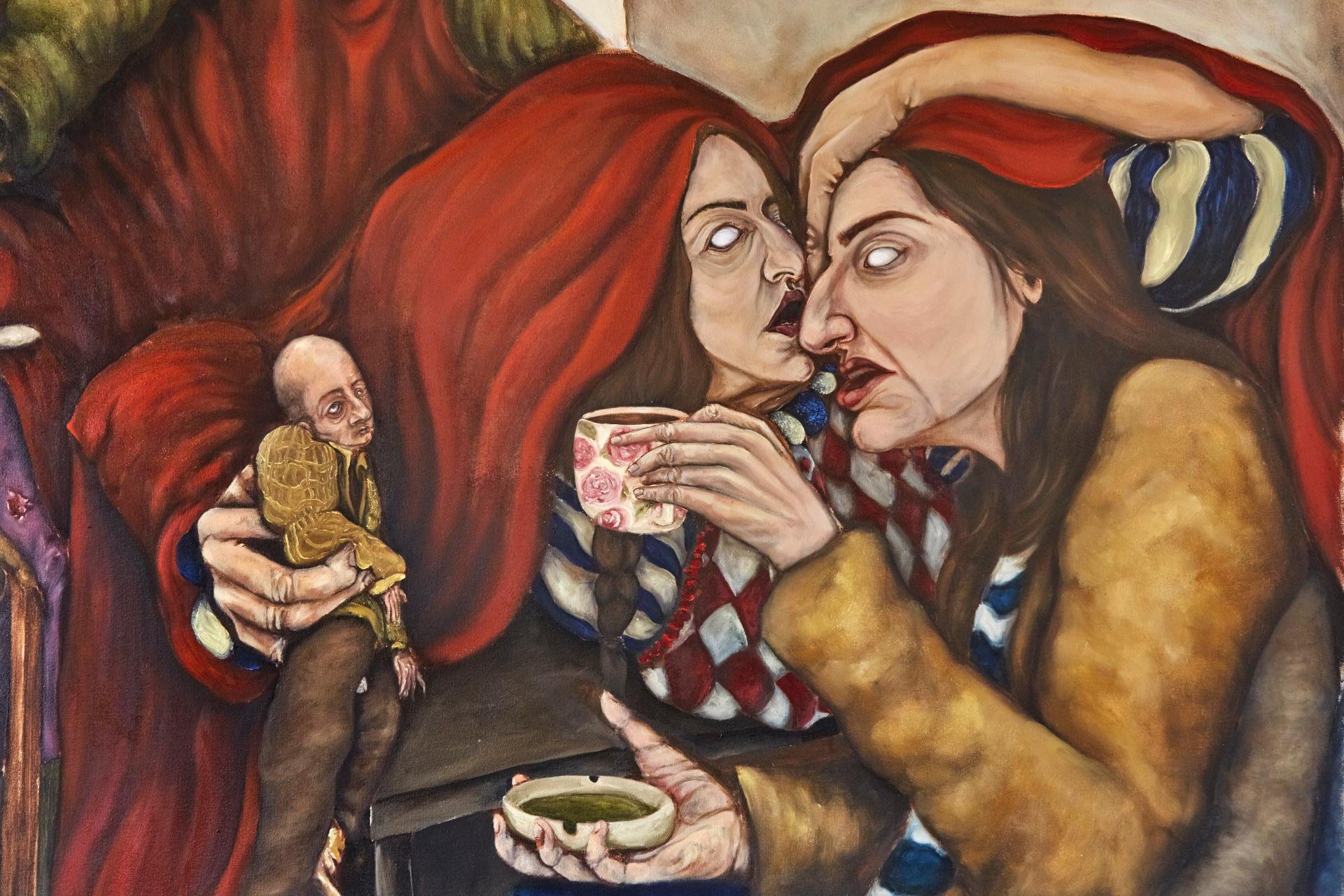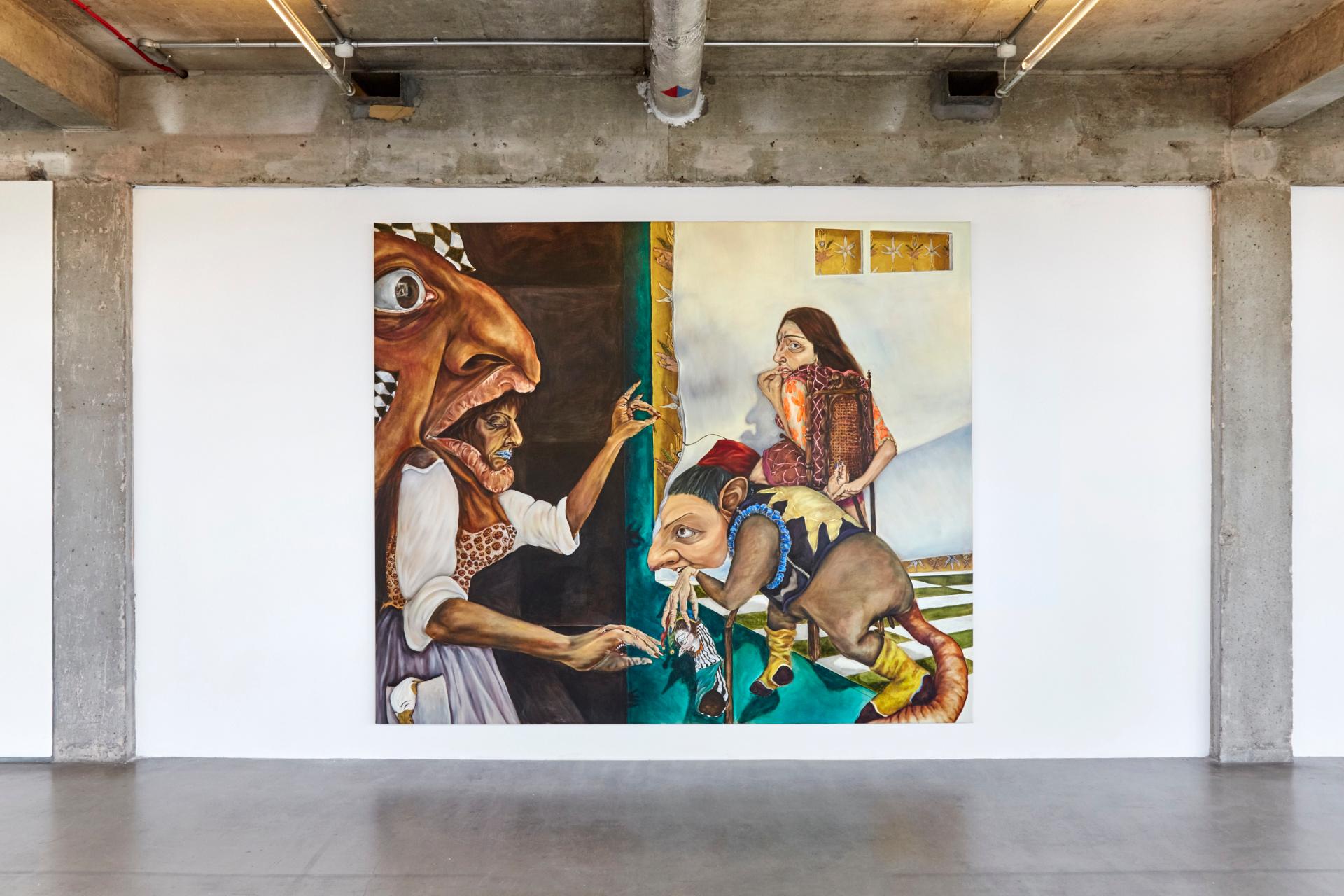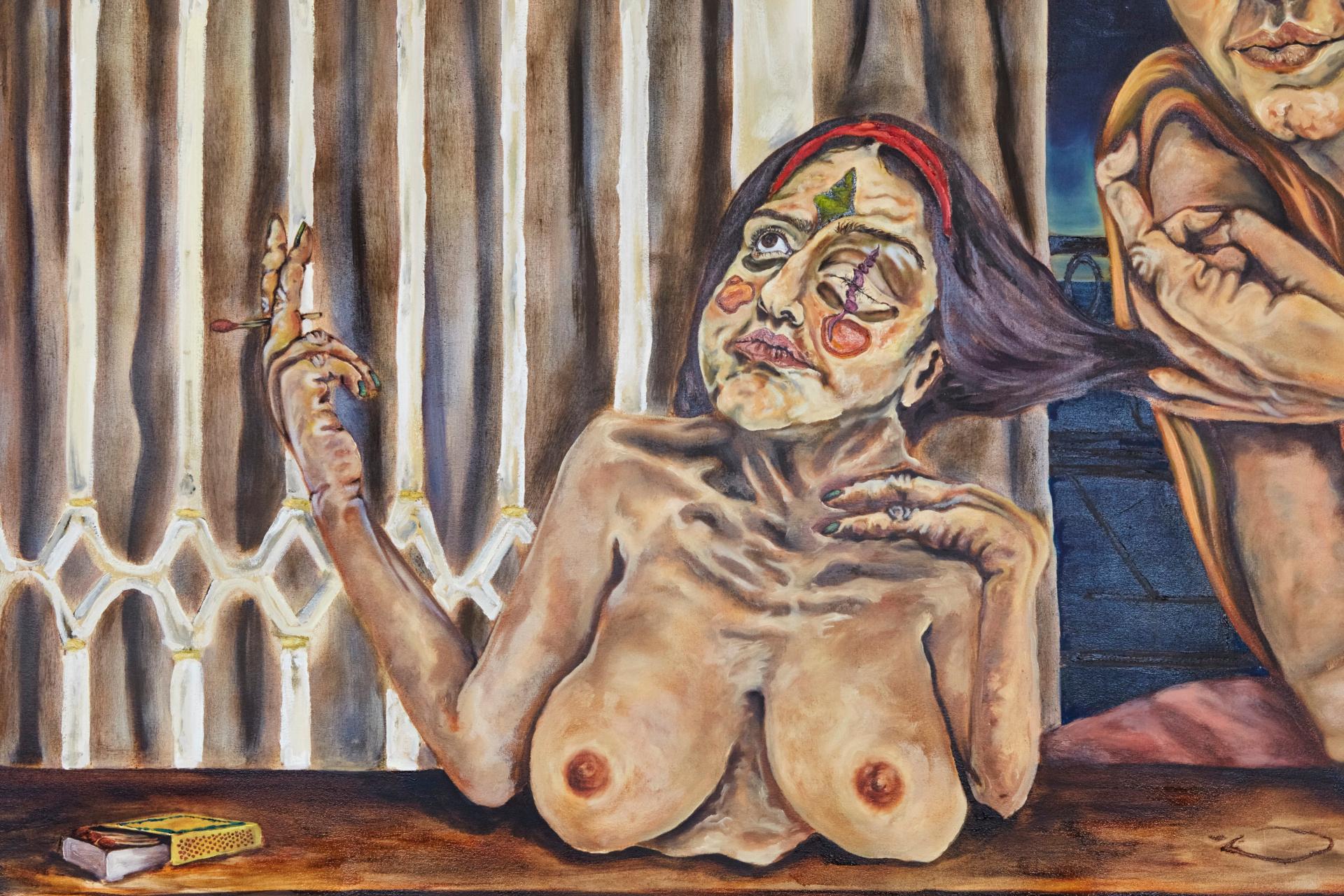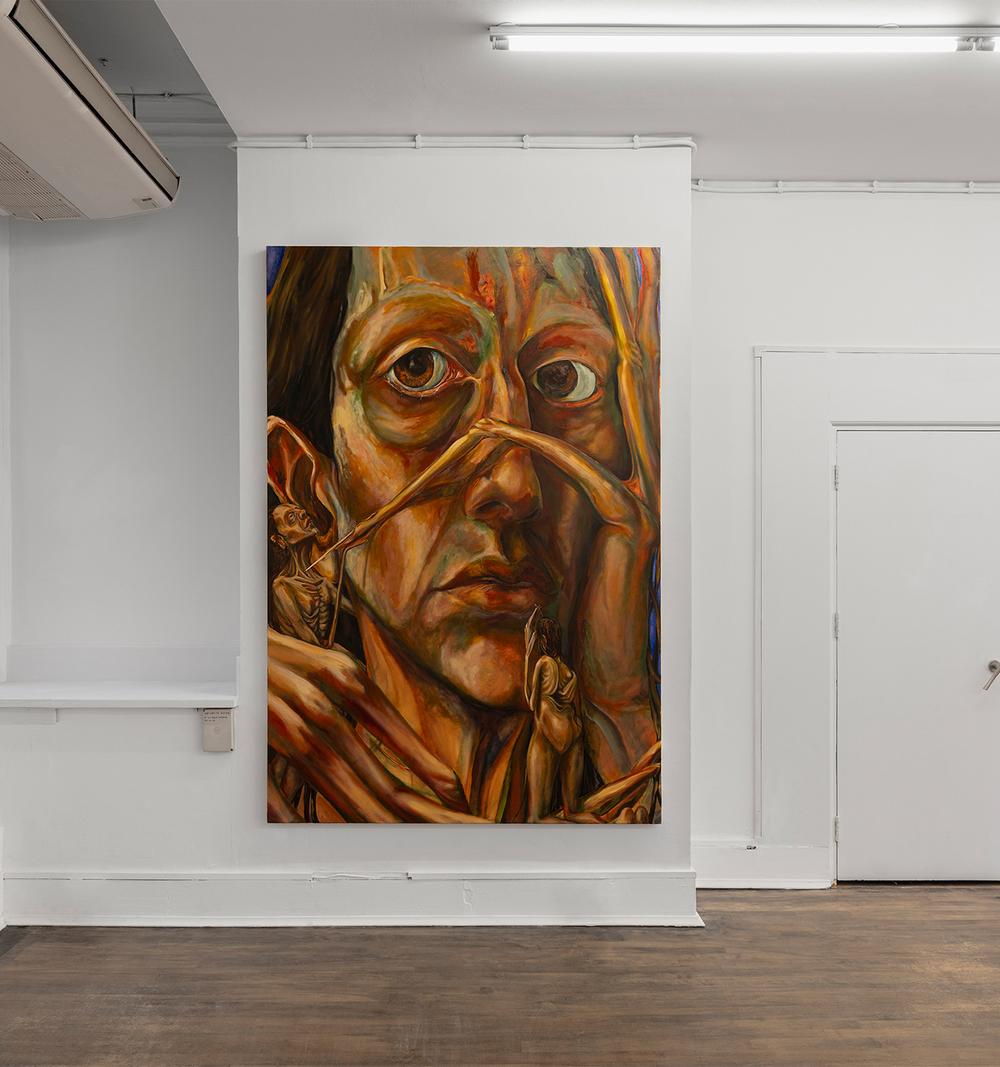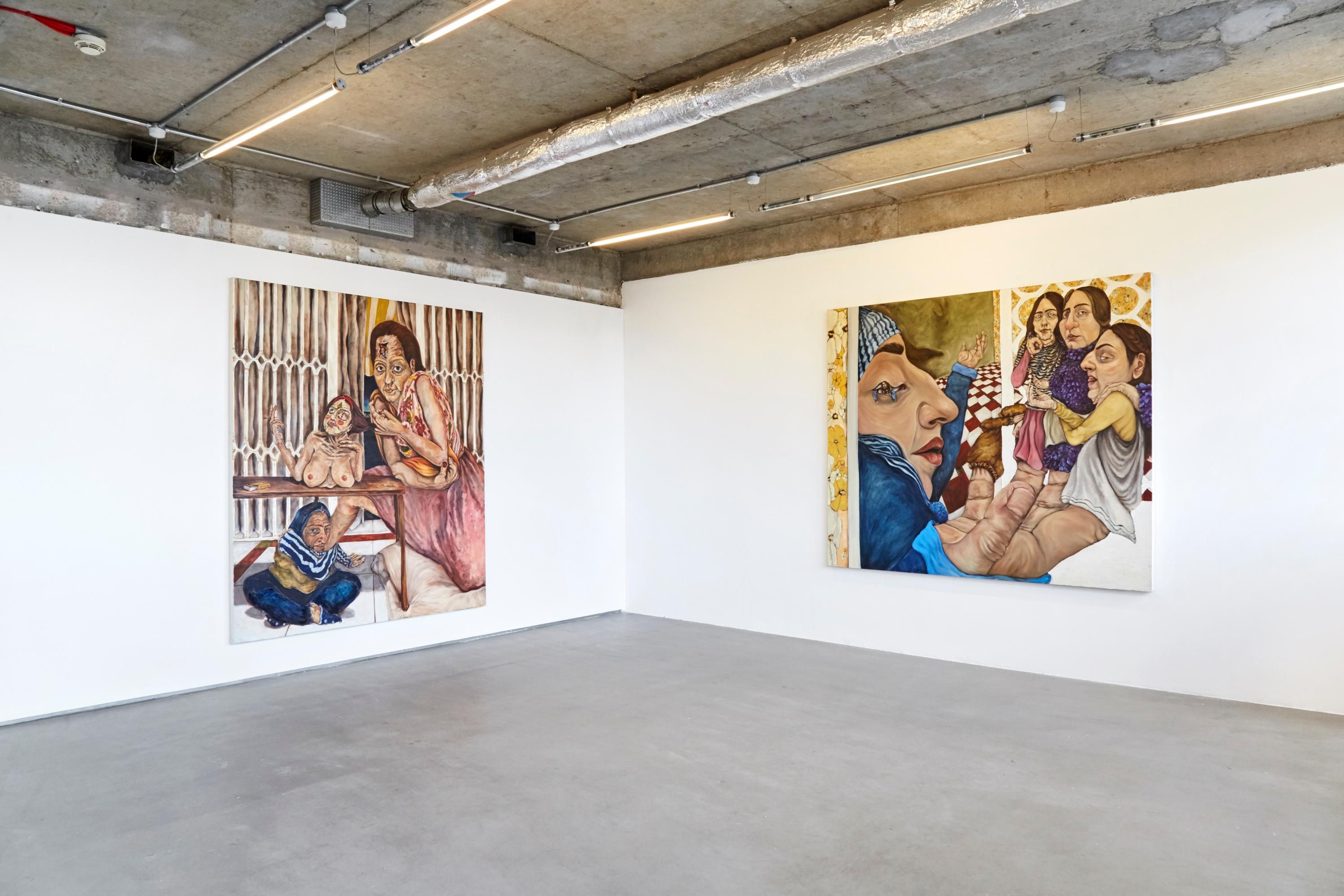
exhibitionNour El SalehExquisite Farces05.09—11.10.201912th Floor
11:00am—6:00pm12th Floor
Exquisite Farces is the culmination of Nour El Saleh’s residency at VO Curations, a curatorial and cultural mediation outfit that are helping usher in a new way for artists to inhabit and make use of the rapidly transforming architecture of an austere London. It also marks her first foray into the wider world following on from three-years of study at The Slade School of Fine Art, London.
El Saleh’s approach dismisses preparatory drawings; lines and forms are imagined, physicalised and placed impulsively to prompt new narrative possibilities. She has worked towards the creation of a satirical language to communicate an uncanny rendition of her own experiences. With her childhood spent in the United Arab Emirates, a host for impermanent residents, El Saleh’s comfort was in a constant state of flux, and through the work she grapples with a sense of belonging; deceivingly familiar spaces are tensed with anguish and actors, and through the use of theatrical and comical imagery, the artist reconciles these two forces.
The Puppeteer of Karakas evokes the memory of a man playing with puppets in the street where El Saleh lives in Beirut. Here, the puppeteer is disguised and plays with four eccentric real-life marionettes. Any hint that they might fall into a Mickey Sabbath-like world of destitution and depravity is reframed with a sense of homeliness; checkered floor tiles and floral wallpaper, which feature as a recurrent backdrop across El Saleh’s scenes.
Inserting small characters in the eyes and heads of certain protagonists, El Saleh seems to play with the apparent roles, and who in fact conducts the scene. A mise en abyme occurs, the Puppeteer of Karakas becomes puppeteered, and equally, the motherly figure of Wrong Side of The Table loses her intimidating aura, turning into a vessel, a further prop in the theatre of El Saleh’s mind. Wrong Side of the Table depicts a juxtaposition between a naked bust-figure, sitting at the table provocatively, acting out for the sake of
being rewarded with attention, which is at odds with a heavily cloaked figure under the table, an elderly child, hidden out of view, coaxing attention through her aloofness.
El Saleh’s characters all seem to resemble each other with similar features: prominent noses, dimpled chins and brown hair, almost to the point of appearing cloned in certain scenes. All interacting intensely within a domestic interior and little space to roam, pronounce the collectivistic atmosphere present across the artist’s paintings. This is echoed by the two hybrid characters that sit aside the central figure in Inhabited Props in a Box, which although are bickering, at once recall squabbling siblings rather than anything untoward; and in this lay the charm of El Saleh’s world. Despite the peculiarity of her depictions, on further inspection there lies a familiarity and intimate feeling of the ‘known’. Representation dissolves, El Saleh seems to abolish the stage, the auditorium and have spectators sit within the composition. In an Artaud-esque manner, actors are seen to be passive and neutral, while masks, puppets and sock marionnettes rule the set.

